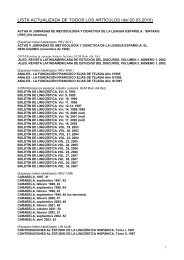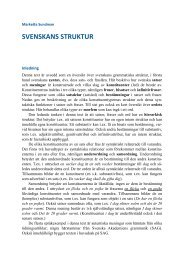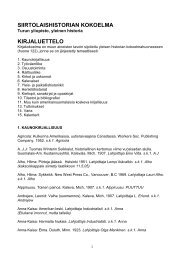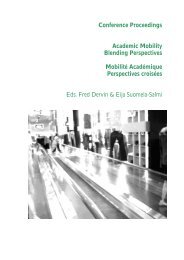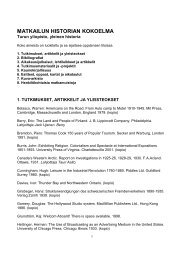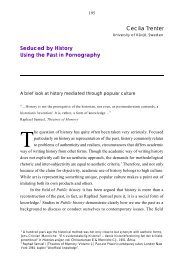Style sheet (pdf)
Style sheet (pdf)
Style sheet (pdf)
You also want an ePaper? Increase the reach of your titles
YUMPU automatically turns print PDFs into web optimized ePapers that Google loves.
You need not give a reference for recognised facts or generally accepted ideas and<br />
opinions. For example, you should write:<br />
Factual texts and works of literature serve different functions.<br />
Although it is true that the point that factual texts and works of literature are<br />
different was explained by a certain author, it is a general fact and not a discovery or<br />
product of intellectual insight. Naturally, if the phrase above were exactly what was<br />
written, it must be quoted verbatim.<br />
In paraphrases, just as for quotations (5.2.2), the final full stop is always placed<br />
after the reference:<br />
According to Hoey, cohesion refers to features that connect a sentence to the<br />
sentences surrounding it in a text (1991: 3).<br />
If you wish to clarify that you have drawn on the same source for several lines, you<br />
need to include an overt statement to this effect within your own text:<br />
Hale (2008: 62-63) explains the importance basing one‟s theory clearly upon the<br />
assumptions one has made regarding what motivates the subjects‟ behaviour within<br />
the theory framework. He explains that with regard to the relational theory of<br />
ethnicity individual‟s behaviour can be most helpfully assumed to be that which<br />
maximises their life chances. No further level of detail is actually necessary at this<br />
stage in the current research, though he admits that it may be useful for others<br />
working in the same area in the future.<br />
5.4 Summaries<br />
In situations where you wish to describe the contents of an entire work or chapter of<br />
a work, you should summarise. You explain the subject and aim of the work (or<br />
chapter) without necessarily going into great detail. You also provide the reader with<br />
the following information: the name(s) of the author(s), the type of work (book,<br />
article, study, etc.), the name of the work, and the year of its publication. Below is an<br />
example of how one of Juliane House‟s works is summarised by Giuseppe Palumbo<br />
(2009: 161) in his book Key Terms in Translation Studies (the use of bold type for<br />
emphasis is in the original):<br />
9




